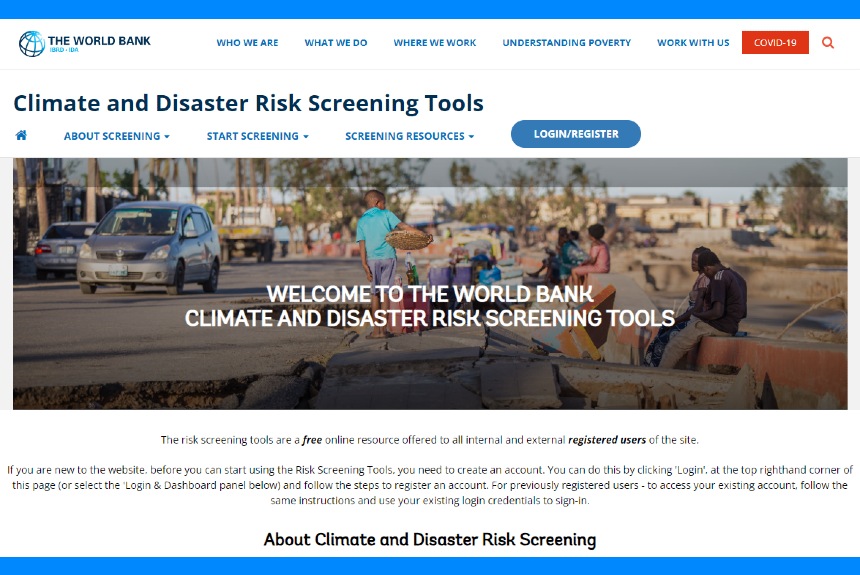Climate change-induced disasters are increasing in frequency and intensity and pose a growing threat to development, with communities and infrastructure increasingly vulnerable. Risk screening is critical in adapting to climate change and building resilience to shocks.
Extreme weather events are increasing in frequency and intensity due to climate change posing high risks to communities and infrastructure and threatening to undermine developmental gains. As countries develop their long-term decarbonisation and climate adaptation plans, these projects must be screened for climate disaster risks.
According to the World Bank, risk screening is a critical step in adapting to climate change and building resilience to shocks; it is also part of the World Bank Group’s commitment to align its financing with the Paris Agreement.
The World Bank developed a suite of climate and disaster risks over the last several years. These tools will help development professions from various sectors such as agriculture, education, energy, finance, health, industry and trade, ICT, government, transportation, and water, screen for risk during projection preparation and planning.
The “Climate and Disaster Risk Screening Tools” identify critical risk exposure and determine the likelihood that climate and geophysical hazards will affect a project’s ability to achieve its development objectives. It also considers opportunities for climate-smart project design.
Since being integrated into the Bank’s operations in 2014, risk screening has been used in over 3,200 projects and has helped 7,000 users conduct risk assessments.
An example of projects that have benefited from the risk screening tools is the Harmonizing and Improving Statistics in West and Central Africa, which as a regional statistics project, would not typically be considered exposed to such risk. Another is the risk screening assessment of the Philippines Multisectoral Nutrition Project.
It finds that climate events such as typhoons, earthquakes, floods and storm surges exacerbate food and nutrition insecurity. Hence these potential impacts and vulnerabilities were considered in the design components of the project.
The climate and disaster risk screening is one of the Bank’s five corporate commitments on climate change. These are climate and disaster risk screening, GHG accounting, calculating the shadow price of carbon, climate co-benefits, and climate indicators.
To learn more about the climate and disaster risk screening tools, visit the website by clicking the link in the “Source” section below.
Source:
Abraham, T., Wadhwa, B., & Dinakaran, C. (2023 May 18). Climate and disaster risk screening – A building block for Paris Alignment. World Bank Blogs. Retrieved from https://blogs.worldbank.org/climatechange/climate-and-disaster-risk-screening-building-block-paris-alignment
Climate and Disaster Risk Screening Tools. (2023). The World Bank. Retrieved from https://climatescreeningtools.worldbank.org/



Leave a Reply